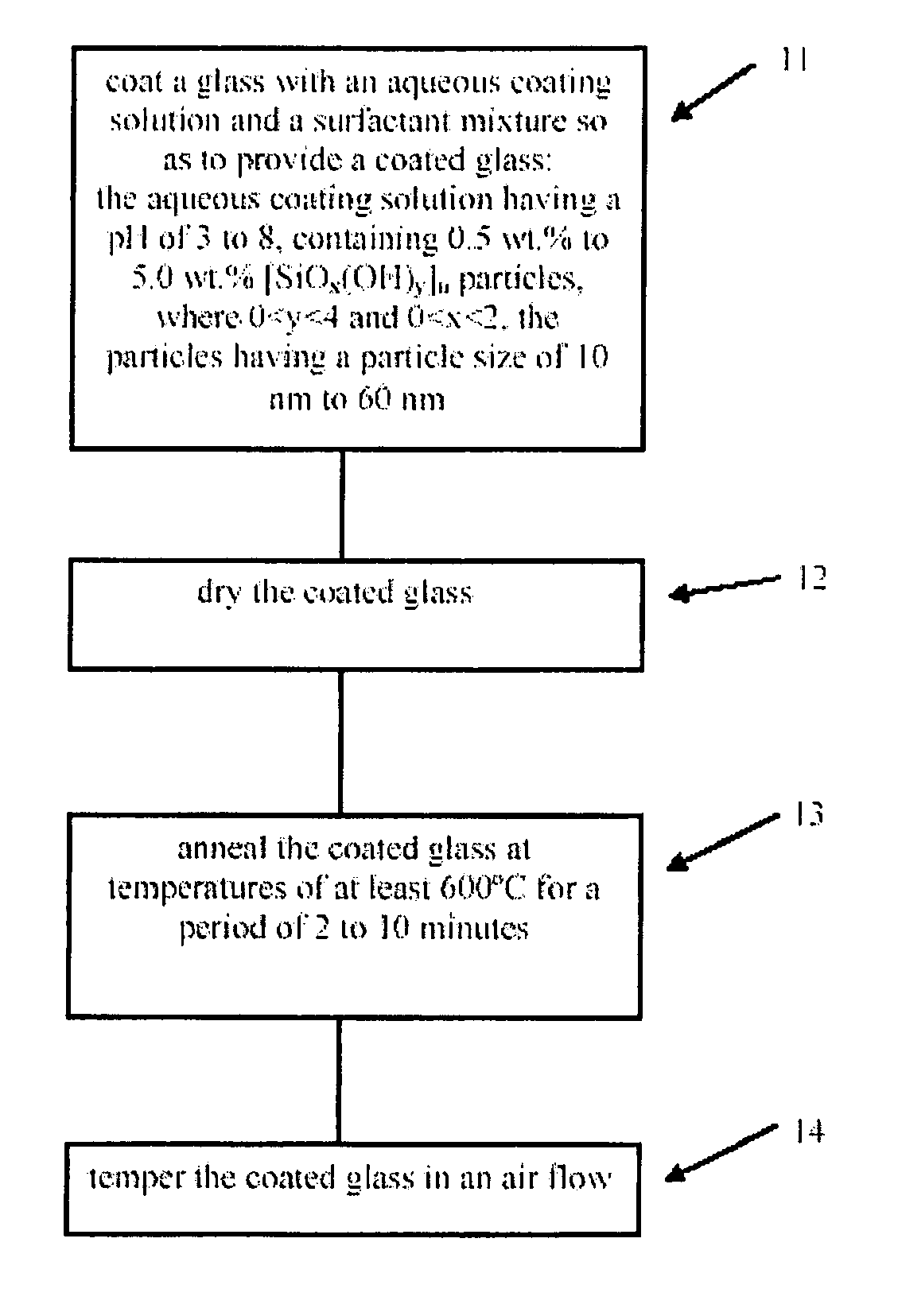Method for making thermally tempered glass comprising a non-abrasive, porous, SiO2 antireflection layer
a technology of thermally tempered glass and anti-reflection layer, which is applied in the direction of glass making apparatus, coatings, instruments, etc., can solve the problems of destructive interference, system unsuitable for solar applications, and reduce the efficiency of solar systems such as photovoltaic cells or solar panels, so as to increase the operating efficiency of such systems and increase transmission.
- Summary
- Abstract
- Description
- Claims
- Application Information
AI Technical Summary
Benefits of technology
Problems solved by technology
Method used
Image
Examples
example 1
[0040]A hydrolysis mixture containing 4.9 L of water, 9.6 L of ethanol, and 250 g of 25% ammonia is prepared. A single portion of 1250 g of tetraethoxysilane annealed at 70° C. is added to this likewise annealed hydrolysis mixture under intensive stirring. A SiO2 sol having a mean particle diameter of 25 nm with a tolerance of ±10% is obtained.
[0041]Subsequently, the reaction mixture is subjected to steam distillation to remove alcohol and ammonia. The aqueous SiO2 sol obtained is adjusted to pH 8 and treated with 0.2 wt. % of a surfactant mixture containing 10.0 wt. % fatty alcohol ether sulfate (C12 / C14 fatty alcohol, 2 mol EO), 5.6 wt. % alkylbenzene sulfonate, 5.5 wt. % fatty alcohol ethoxylate, and 8.9% water.
example 2
[0042]A glass pane previously cleaned using demineralized water and then dried, having the dimensions of 1 m×1 m and a thickness of 4 mm is dipped into the coating solution of Example 1 and pulled out at a constant pulling rate of 10 cm / min. Subsequently the coating is dried at room temperature either by simply letting it rest or by a forced air flow prior to being removed from the coating equipment, annealed, and tempered. The coated glass pane is placed in a horizontal tempering system in the furnace region heated to 700° C. and warmed for 160 seconds.
[0043]Subsequently the glass pane is tempered in an air shower for 120 seconds. A safety glass provided with an antireflection layer is obtained. When using low-iron glasses, a solar transmission of 95% is achieved compared to 90% with uncoated glass.
PUM
| Property | Measurement | Unit |
|---|---|---|
| Temperature | aaaaa | aaaaa |
| Temperature | aaaaa | aaaaa |
| Acidity | aaaaa | aaaaa |
Abstract
Description
Claims
Application Information
 Login to View More
Login to View More - R&D
- Intellectual Property
- Life Sciences
- Materials
- Tech Scout
- Unparalleled Data Quality
- Higher Quality Content
- 60% Fewer Hallucinations
Browse by: Latest US Patents, China's latest patents, Technical Efficacy Thesaurus, Application Domain, Technology Topic, Popular Technical Reports.
© 2025 PatSnap. All rights reserved.Legal|Privacy policy|Modern Slavery Act Transparency Statement|Sitemap|About US| Contact US: help@patsnap.com


